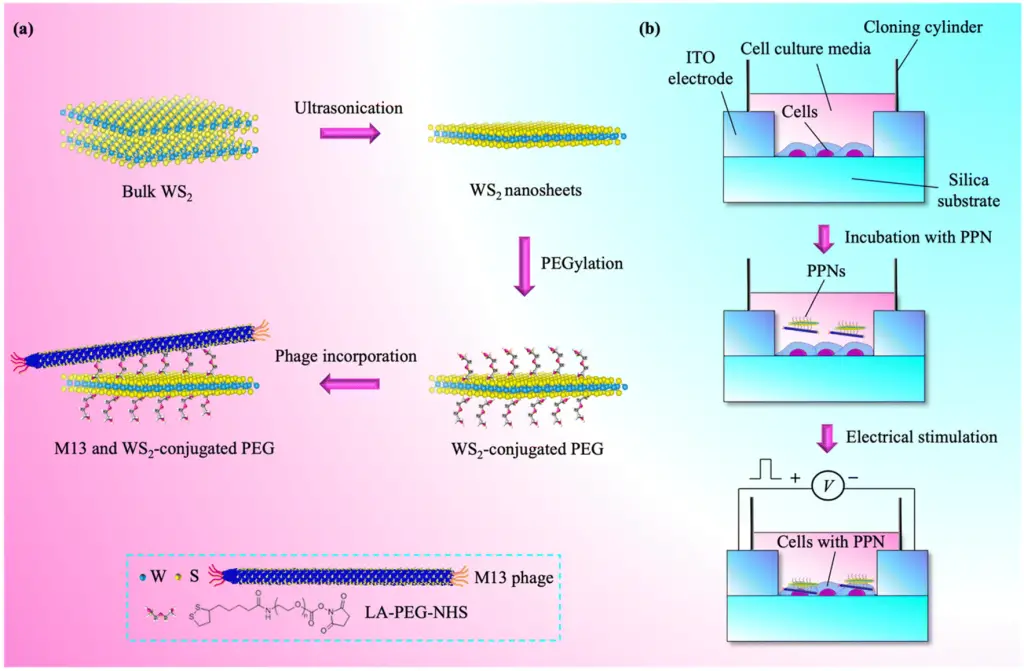Recently, I had an interview with a well-established scientist in the phage world, Dr. Jean Paul Pirney from Queen Astrid Military Hospital in Belgium. Although the interview was not solely about synthetic biology, he hinted at how, in the future, it may be a very reliable tool in creating the perfect predator. This interview inspired me to delve deeper into this technology and explore its potential impact on the development of phage therapy.
Bacteriophages, or simply phages, are nature’s tiny warriors in the ongoing battle against bacterial infections. These viruses specifically target bacteria, hijacking their cellular machinery to replicate and ultimately destroy them. However, despite their potential as antimicrobial agents, harnessing bacteriophages for therapeutic purposes has been hindered by various challenges, including narrow host ranges, carrying undesirable genes (i.e resistance and virulence) and the risk of bacterial resistance.
Enter synthetic biology, a cutting-edge field that empowers scientists to redesign and engineer biological systems with precision. By leveraging the tools and techniques of synthetic biology, researchers are now poised to revolutionize bacteriophage therapy, creating tailor-made phages perfectly suited to combat bacterial pathogens.
Understanding Bacteriophages:
Before delving into the realm of synthetic biology, let’s first appreciate the remarkable biology of bacteriophages. These minute entities consist of a protein coat encapsulating genetic material, either DNA or RNA. Upon encountering a susceptible bacterial host, a bacteriophage attaches to the cell surface and injects its genetic material, hijacking the host’s machinery to replicate and produce progeny phages. This process culminates in the lysis of the host cell, releasing a swarm of new phages ready to infect neighboring bacteria. But lysis is not always the case, although that is primarily desired when discussing the application of phage therapy. Some phages, such as filamentous ones, in fact, do not lyse their hosts at all.
Challenges in Bacteriophage Therapy:
While bacteriophages hold immense promise as antibacterial agents, their utility has been limited by several factors. One significant challenge of phage therapy is their narrow host specificity, which restricts their effectiveness against a limited range of bacterial strains. Moreover, bacteria can develop resistance to phages through mechanisms such as mutation or the evolution of surface receptors that prevent phage attachment. Also bacteriophages may carry genes (such as AMR and virulence) that may enhance the pathogenesis and immune evasion of the host bacteria. These challenges underscore the need for innovative approaches to engineer bacteriophages with enhanced potency and versatility.
Synthetic Biology: A New Frontier:
Synthetic biology offers a transformative toolkit for manipulating and redesigning biological systems. At its core, synthetic biology involves the rational design and assembly of genetic components to create novel functionalities. This interdisciplinary field draws upon principles from molecular biology, genetics, engineering, and computer science, enabling scientists to engineer biological entities with precision and efficiency.
Engineering Perfect Bacteriophages:
In the realm of bacteriophage engineering, synthetic biology opens up a myriad of possibilities. Researchers can modify phage genomes to enhance their host range, enabling them to target a broader spectrum of bacterial pathogens. By incorporating genetic elements that evade bacterial resistance mechanisms, engineered phages can maintain their effectiveness even in the face of evolving bacterial defenses. Adding to that those potential harmful genes can be deleted or even replaced with the useful one. Additionally, synthetic biology allows for the design of phages with tailored characteristics, such as increased stability or improved pharmacokinetics, optimizing their therapeutic potential.
Applications in Medicine and Beyond:
The implications of synthetic biology-driven bacteriophage engineering extend far beyond the realm of medicine. Engineered phages hold promise for combating antibiotic-resistant infections, addressing challenges in agriculture, and even contributing to environmental remediation efforts. By harnessing the power of synthetic biology, we can unlock the full potential of bacteriophages as versatile tools for combatting bacterial pathogens across diverse contexts.
Ethical and Regulatory Considerations:
As with any emerging technology, the application of synthetic biology in bacteriophage engineering raises important ethical and regulatory considerations. Safeguarding against unintended consequences (such as spreading of these phages to the environment), ensuring transparency in research practices, and promoting equitable access to innovative therapies are paramount. Regulatory frameworks must adapt to accommodate the unique challenges and opportunities presented by synthetic biology, fostering responsible innovation while upholding safety and ethical standards.
Biocontainment and biosafety practices
Preventing engineered phages from spreading into the environment is a crucial consideration in biocontainment and biosafety practices. One approach to achieving this is through biological containment mechanisms, often referred to as “biological locking.” Biological locking involves introducing genetic modifications into the engineered phages to render them incapable of surviving and replicating outside of controlled laboratory conditions. Here are a few strategies commonly employed for biological containment:
- Auxotrophic Strains: Modify the engineered phage to rely on specific nutrients or compounds that are not readily available in the environment. By creating auxotrophic strains that require exogenous supplements for growth, the phages become dependent on laboratory conditions for survival.
- Conditional Lethality: Introduce genetic circuits or switches that control essential phage functions, such as replication or gene expression, in response to specific environmental cues. These conditional lethal systems ensure that the phages can only replicate under tightly regulated conditions present in the laboratory setting.
- Genetic Barriers: Engineer the phage genome with genetic barriers, such as “suicide genes” or “genetic isolation systems,” that prevent horizontal gene transfer or recombination with wild-type phages. These barriers help minimize the risk of genetic exchange between engineered phages and natural phage populations in the environment.
- Physical Containment: Implement physical containment measures, such as secure laboratory facilities, containment chambers, or specialized bioreactor systems, to prevent accidental release of engineered phages into the environment.
- Monitoring and Surveillance: Establish robust monitoring and surveillance protocols to track the presence and behavior of engineered phages both within laboratory settings and in potential environmental release scenarios. May be engeneering bio-reporter phages may be of help do that the spill over to the environment can easily be detecetd. Rapid detection methods can facilitate timely response strategies in the event of unintended dissemination.
While biological locking strategies offer promising avenues for enhancing biocontainment, it’s essential to acknowledge that no containment method is foolproof. Therefore, comprehensive risk assessments, adherence to strict biosecurity protocols, and ongoing research into advanced containment technologies are crucial for ensuring the safe and responsible development of engineered phages for therapeutic and biotechnological applications.
Future Perspectives:
Looking ahead, the future of synthetic biology-driven bacteriophage therapy appears promising. Ongoing research endeavors seek to further refine and optimize engineered phages, paving the way for their widespread clinical adoption. Collaborative efforts between scientists, policymakers, and industry stakeholders will be essential in realizing the full potential of this transformative approach to combating bacterial infections.
Synthetic biology offers a powerful toolkit for engineering perfect bacteriophages capable of tackling the complex challenges posed by bacterial pathogens. By harnessing the principles of synthetic biology, we can unlock new frontiers in antimicrobial therapy, ushering in a future where precision-engineered phages stand as potent allies in the fight against infectious disease.




Comments